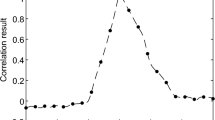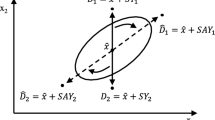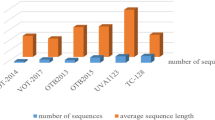Abstract
To handle the problem of target tracking in the presence of standoff jamming (SOJ), a Gaussian sum unscented Kalman filter (GSUKF) and a Gaussian sum particle filter (GSPF) using negative information (scans or dwells with no measurements) are implemented separately in this paper. The Gaussian sum likelihood which is derived from a sensor model accounting for both the positive and the negative information is used. GSUKF is implemented by fusing the state estimate of two or three UKF filters with proper weights which are explicitly derived in this paper. Other than GSUKF, the Gaussian sum likelihood is directly used in the weight update of the GSPF. Their performances are evaluated by comparison with the Gaussian sum extended Kalman filter (GSEKF) implementation. Simulation results show that GSPF outperforms the other filters in terms of track loss and track accuracy at the cost of large computation complexity. GSUKF and GSEKF have comparable performance; the superiority of one over another is scenario dependent.
Similar content being viewed by others
References
Neri F. Introduction to electronic defense systems [M]. Norwood, MA: Artech House, 2001.
Bar-Shalom Y, Blair WD. Multitarget-multisensor tracking: Applications and advances, Vol. III [M]. Boston, MA: Artech House, 2000.
Blair W D, Watson G A, Gentry G L, et al. Benchmark problem for beam pointing control of phased array radar against maneuvering targets in the presence of ECM and false alarms [C]//Proceedings of 1995 American Control Conference. Seattle, USA: IEEE, 1995: 2601–2605.
Blair W D, Watson G A, Kirubarajan T, et al. Benchmark for radar allocation and tracking in ECM [J]. IEEE Transactions on Aerospace and Electronic Systems, 1998, 34(4): 1097–1114.
Kirubarajan T, Bar-Shalom Y, Blair W D, et al. IMMPDAF for radar management and tracking benchmark with ECM [J]. IEEE Transactions on Aerospace and Electronic Systems, 1998, 34(4): 1115–1132.
Xu Hai-quan, Wang Guo-hong, Guan Cheng-bin. Tracking technique in the presence of standoff jamming [J]. Journal of Beijing University of Aeronautics and Astronautics, 2011, 37(11): 1353–1358 (in Chinese).
Koch W. On ‘negative’ information in tracking and sensor data fusion: Discussion of selected examples [C]// Proceedings of the Seventh International Conference on Information Fusion. Stockholm, Sweden: IEEE, 2004: 91–98.
Blanding W R, Koch W, Nickel U. Adaptive phased-array tracking in ecm using negative information [J]. IEEE Transactions on Aerospace and Electronic Systems, 2009, 45(1): 152–166.
Julier S J, Uhlmann J K. Unscented filtering and nonlinear estimation [J]. Proceedings of the IEEE, 2004, 92(3): 401–422.
Wan EA, van derMerwe R. The unscented Kalman filter for nonlinear estimation [C]// IEEE Symposiums on Adaptive Systems for Signal Processing, Communications, and Control. Lake Louise, Alta, Canada: IEEE, 2000: 153–158.
Gordon N J, Salmond D J, Smith A F M. Novel approach to non-linear/non-gaussian Bayesian state estimation [J]. Proceedings of Institute Electric Engineering, 1993, 140(2): 107–113.
Arulampalam M S, Maskell S, Gordon N, et al. A tutorial on particle filters for online nonlinear/non-Gaussian Bayesian tracking [J]. IEEE Transactions on Signal Processing, 2002, 50(2): 174–188.
Nickel U. Performance analysis of space-time-adaptive monopulse [J]. Signal Processing, 2004, 84(9): 1561–1579.
Bar-Shalom Y, Li X R, Kirubarajan T. Estimation with applications to tracking and navigation [M]. New York: Wiley, 2001.
Flury T, Shephard N. Bayesian inference based only on simulated likelihood: Particle filter analysis of dynamic economic models [J]. Econometric Theory, 2011, 27(5): 933–956.
Gustafsson F. Particle filter theory and practice with positioning applications [J]. IEEE Transactions on Aerospace and Electronic Systems, 2010, 25(7): 53–82.
Ahmed N, Rutten M, Bessell T, et al. Detection and tracking using particle-filter-based wireless sensor networks [J]. IEEE Transactions on Mobile Computing, 2010, 9(9): 1332–1345.
Yap T, Li M, Mourikis A I, et al. A particle filter for monocular vision-aided odometry [C]// IEEE International Conference on Robotics and Automation (ICRA). Shanghai, China: IEEE, 2011: 5663–5669.
Li X R, Jilkov V P. Survey of maneuvering target tracking. Part I: Dynamic models [J]. IEEE Transactions on Aerospace and Electronic Systems, 2003, 39(4): 1333–1364.
Author information
Authors and Affiliations
Corresponding author
Rights and permissions
About this article
Cite this article
Hou, J., Jing, Zr. & Yang, Y. Target tracking in standoff jammer using unscented Kalman filter and particle fiter with negative information. J. Shanghai Jiaotong Univ. (Sci.) 19, 181–189 (2014). https://doi.org/10.1007/s12204-014-1488-4
Received:
Published:
Issue Date:
DOI: https://doi.org/10.1007/s12204-014-1488-4
Key words
- target tracking
- standoff jamming (SOJ)
- negative information
- unscented Kalman filter (UKF)
- particle filter




